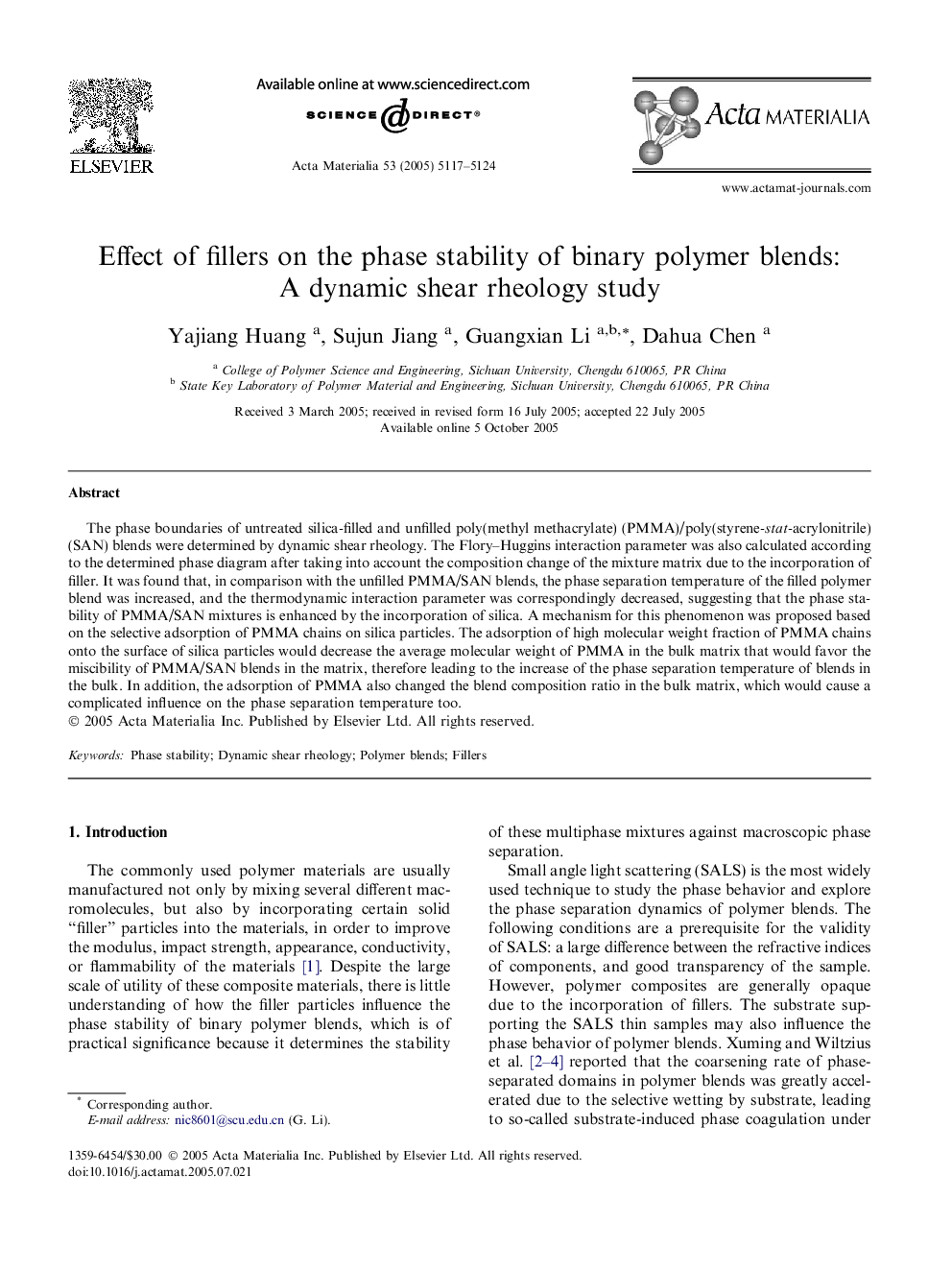| Article ID | Journal | Published Year | Pages | File Type |
|---|---|---|---|---|
| 1451299 | Acta Materialia | 2005 | 8 Pages |
The phase boundaries of untreated silica-filled and unfilled poly(methyl methacrylate) (PMMA)/poly(styrene-stat-acrylonitrile) (SAN) blends were determined by dynamic shear rheology. The Flory–Huggins interaction parameter was also calculated according to the determined phase diagram after taking into account the composition change of the mixture matrix due to the incorporation of filler. It was found that, in comparison with the unfilled PMMA/SAN blends, the phase separation temperature of the filled polymer blend was increased, and the thermodynamic interaction parameter was correspondingly decreased, suggesting that the phase stability of PMMA/SAN mixtures is enhanced by the incorporation of silica. A mechanism for this phenomenon was proposed based on the selective adsorption of PMMA chains on silica particles. The adsorption of high molecular weight fraction of PMMA chains onto the surface of silica particles would decrease the average molecular weight of PMMA in the bulk matrix that would favor the miscibility of PMMA/SAN blends in the matrix, therefore leading to the increase of the phase separation temperature of blends in the bulk. In addition, the adsorption of PMMA also changed the blend composition ratio in the bulk matrix, which would cause a complicated influence on the phase separation temperature too.
